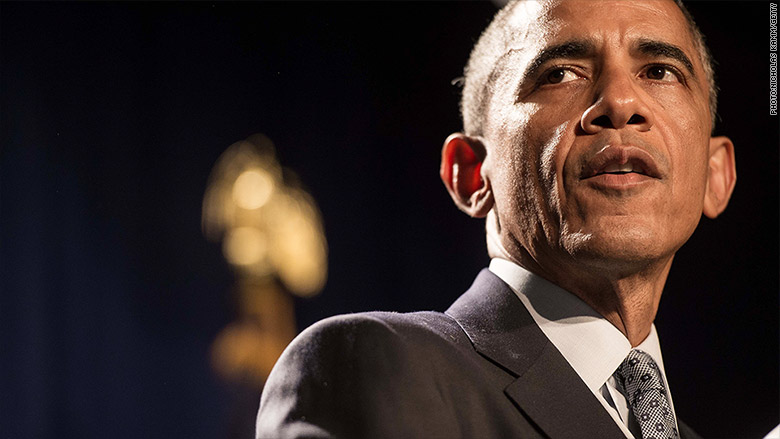
New year. Old strategy.
The White House has already revealed many of President Obama's proposals to raise taxes on the rich that will be in his 2016 budget, due out Monday.
Among them: A plan to increase investment taxes and get rid of the so-called "trust fund loophole" in the estate tax.
The idea is to help pay for other measures aimed at helping low- and middle-income families. They may also be used to help pay for increased government spending.
Calling for higher taxes on the rich has been a feature of every one of Obama's budgets since 2009. Remember the Buffett Rule? That would have imposed a minimum 30% effective federal tax rate on the very wealthy.
That one and most others didn't get very far, but that doesn't mean Obama's push hasn't been effective.
Under Obama, the average federal tax rate paid by the top 1% of households has gone up more than 6 percentage points to an estimated 33.8% today, according to the Tax Policy Center.
Related: How Obama would close the 'trust fund loophole'
That's largely due to the following tax hikes that were part of the Affordable Care Act and the bipartisan fiscal cliff deal at the start of 2013.
Higher Medicare tax on top wages: It used to be that everyone paid 1.45% in Medicare taxes on all their wages (or 2.9% if self-employed). But the Affordable Care Act added an additional 0.9% tax on wages over $200,000 ($250,000 if married).
So the highest wage earners now pay 1.45% on their earned income up to that threshold and 2.35% on the earnings above it.
New Medicare tax on investment income: The ACA also imposed the Medicare tax on investment income at a rate of 3.8%.
In this context, investment income can come from capital gains, dividends, interest, rental income and annuities.
It's not a straightforward tax in that it wouldn't necessarily apply to 100% of one's investment income. It would apply to whichever is less -- your investment income or the amount that your modified adjusted gross income (AGI) exceeds the high-income threshold.
A higher top income tax rate: For those with taxable income over $400,000 ($450,000 if married), the fiscal cliff deal raised their top income tax rate to 39.6%, up from 35% previously.
Higher capital gains and dividend tax rates: For those with taxable income over $400,000 ($450,000 if married), their rate on dividends and long-term capital gains is now 20%, up from 15% previously.
In his 2016 budget proposal, Obama will call for the long-term capital gains and dividend tax rate for high-income households to be raised again -- this time to 24.2%.
So for taxpayers also subject to the 3.8% Medicare surtax, they would pay a top rate of 28% on at least some of their investment income.
Limits on tax breaks for high-income households: For people with adjusted gross incomes over $250,000 (or $300,000 for married couples), the fiscal cliff deal reinstated limitations or phase-outs that reduce the value of itemized deductions and personal exemptions.
